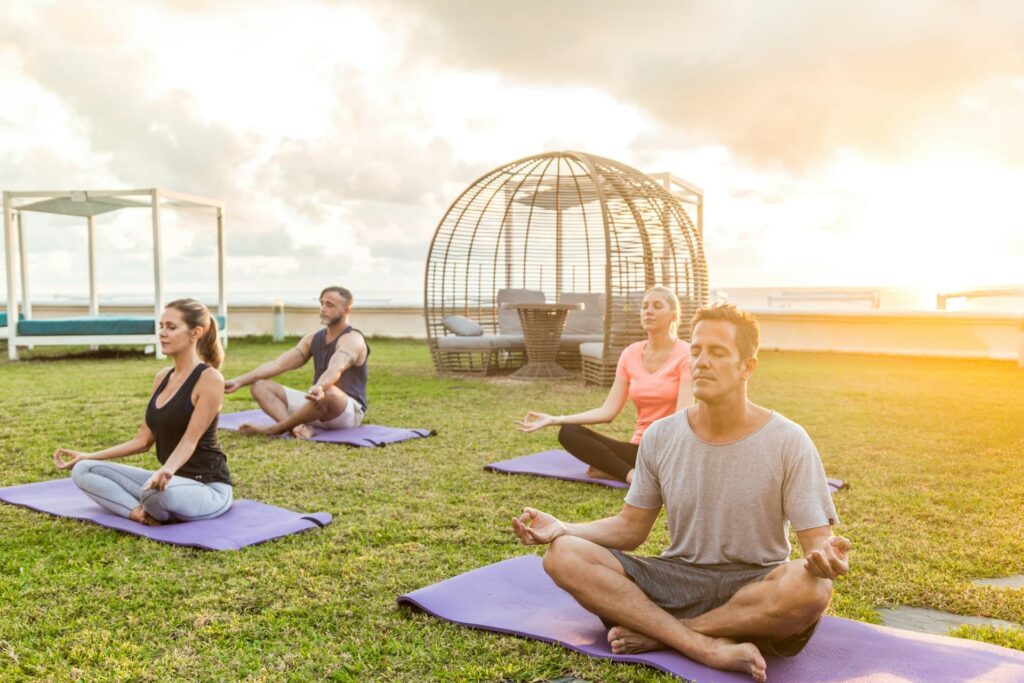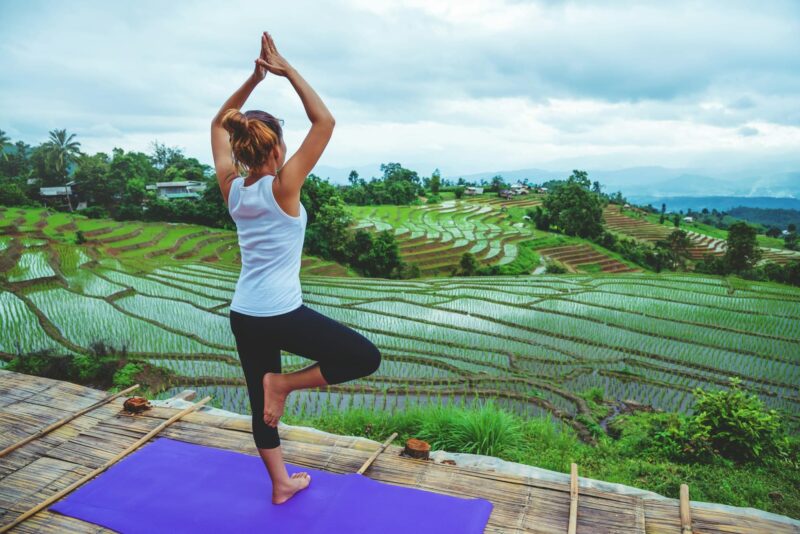In partnership with beYogi
In the yoga classes you’ve taught or taken, have you ever seen anyone get hurt? While it doesn’t happen in every or even most classes, yoga still carries risks. None of us are perfect teachers nor are our students perfect practitioners.
Whether an accident, malpractice, or legal issue occurs, it can put teachers and yogis in a difficult situation. Liability insurance makes that situation less stressful for all involved. It protects you from legal and financial consequences, allowing you to focus on what you love — teaching your students.
What is professional liability insurance for yoga instructors?
Professional liability insurance is recommended and sometimes even required for many fields including specific categories of yoga, pilates, and yoga therapy. It provides legal and financial protection in the event of a covered event.
As a yoga teacher, look for a policy that offers comprehensive protection to encompass all that you do. If you teach at multiple facilities, choose a policy that covers you in several spaces. If you teach online, look for options that include virtual classes (Pro tip: Don’t forget to include live and pre-recorded options if you offer different formats). If you teach private sessions and events, you might want to find a policy that covers that too.
beYogi offers a complete package for U.S. based instructors including professional and general liability coverage, personal injury, advertising injury, and covers more than 500 services to keep your teaching covered no matter when, where, or what you teach.
What does liability insurance cover?
Most insurance policies, including beYogi’s, cover general and or professional liability coverage. If you’re wondering what that means, read on to find out more.
General liability coverage for yoga teachers
General liability or “slip and fall” coverage “protects you from non-specific harm or injuries while on your property or under your teaching” (beYogi, 2025). This is coverage for problems that occur not as a result of teaching, but for other problems that may arise such as facility problems. Some of the situations where general liability coverage will help you are:
- A student slips and falls on the ice on the way to a winter class
- A pipe breaks and floods the locker room, damaging people’s belongings
- The shelf holding mats and supplies fall on a student when they pull a mat out.
Professional liability coverage for yoga teachers
Professional liability or “malpractice” coverage “helps protect you against the cost of injuries from errors and omissions” (beYogi, 2025). This is the insurance that covers you and your teaching. Situations where professional liability coverage helps are:
- You cue a pose in a way that causes a student to be injured
- Your hands-on adjustment caused undue pain, discomfort, or injury to a student
- A student falls, overstretches, or aggravates an already-existing medical condition during class.
You may be thinking “My studio has insurance that covers me,” and that may be true. However, all yoga teachers should carry their own insurance, regardless of their place of employment. Businesses often carry insurance that only protects business assets, but falls short of fully protecting their instructors. It is beneficial to carry your personal policy so that you know you are protected. It applies to all, whether an independent instructor, studio owner, or online teacher.

All-inclusive liability coverage for yoga teachers
General and professional liability coverage are the two pillars of most insurance plans. They cover many of the big risks of teaching yoga including injuries and facility risks. But what about the less obvious risks that come with yoga teaching?
Look for policies like beYogi’s, that contain additional benefits, such as personal injury and advertising coverage. This protects you in the event of:
- Defamation
- Invasion of privacy
- Copyright and trademark infringements (beYogi, 2025).
These can give you a greater peace of mind and offer safeguards from many challenges, especially in an age where so much of our work is highly public.
Key benefits of having liability insurance
When you have yoga liability insurance, you have more than just protection from legal costs. Coverage can help with fees, settlements, and medical costs which you would otherwise be exposed to without insurance.
One of the key benefits of having insurance is the credibility and professionalism it provides. For example, a long-time yoga student once asked her instructor if they had insurance in case something went wrong. The question was unexpected, as the instructor hadn’t realized students considered such things. After confirming they were insured, the two had a brief discussion about liability coverage for yoga teachers. By the end of the conversation, the student expressed that knowing this made her see yoga in a more professional light. This interaction serves as a reminder that students care — not just about their own safety but also about the well-being of their instructors.
What to look for in a yoga liability insurance policy
Now that you’re familiar with the major types of coverage on a policy, how do you know what makes a policy stand out? Here’s what to look for in a yoga liability insurance policy:
- Coverage limits and what’s included — How much and how many occurrences does your policy cover? Are there limits, waiting periods, or deductibles you should be aware of?
- Whether it covers in-person and/or online teaching — Does it cover different locations? What about outdoor classes, private events, retreats, and one-off classes?
- Does it offer additional benefits that could help further your business? — Do you have coverage for online classes or when you travel? Does it offer identity theft protection?
- Limitations and exclusions — Understand what is and what is not covered in your policy. For example, beYogi only covers U.S. based teachers. Make sure you choose a policy that covers your needs.
These are just a few of the questions you may ask when researching yoga liability insurance policies. When you know what you want in a policy, compare various companies and policies. Look into their backgrounds, how they address and process claims, and what their customers say about their interactions with the business.
Consider pricing and how often you intend to teach. Some companies offer differently priced policies if you teach full- or part-time. If you’re still a student in a yoga teacher training program, beYogi offers a student insurance policy at a deeply discounted rate to protect you and other students as you learn. Once you graduate, you can update it to reflect your new teaching status to hit the road running.
Conclusion
Whether you’re enrolled in a yoga teacher training program or are a veteran teacher, it is never too early to protect yourself and your career with insurance. It is an investment you will not regret. Good insurance is a vital part of your business and career if for nothing else but the peace of mind it brings. As teachers, you do all you can in class to protect your students’ safety and well-being. Liability insurance is simply another means of protection, one that covers the students’ work and your own. Don’t leave yourself open to unnecessary risks and needless worries. Consider your coverage today and start teaching safer with beYogi.
References
beYogi. (2025, January 8). All-inclusive Yoga Insurance. Beyogi. https://beyogi.com/yoga-insurance-plus/
Murphy, R. (2021, August 16). General Liability vs. Professional Liability Insurance: Do You Need Both? NerdWallet. https://www.nerdwallet.com/article/small-business/general-liability-vs-professional-liability










